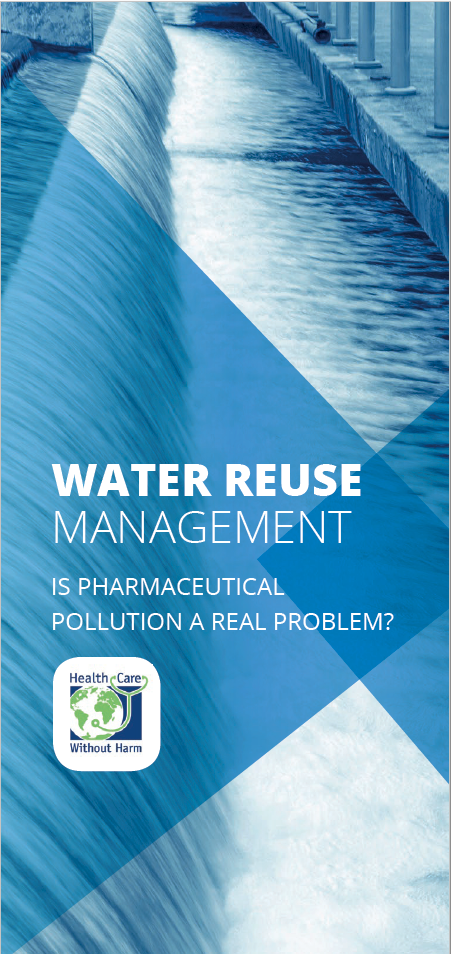Today, World Water day, is a day for “focusing attention on the importance of water” and remembering Sustainable Development Goal 6: Ensure availability and sustainable management of water and sanitation for all. As stated within the SDGs “Access to safe water and sanitation and sound management of freshwater ecosystems are essential to human health and to environmental sustainability and economic prosperity."
The challenge of water scarcity
We simply cannot live without water; but access to clean water sources is an important challenge we are now facing. Affecting every continent, water scarcity is not an isolated problem; the Global Water Institute reports that 700 million people in 43 countries are affected by water scarcity. Over 75% of the world’s population suffer from water scarcity for at least one month a year.
Water scarcity is challenging not only because of water shortages, but some areas lack adequate infrastructure to ensure regular and sustainable water supplies.
EU’s solution to the problem – A rather contradictory quick fix
Statistics show that by 2007, at least 11% of European citizens and 17% of Europe’s territory has been affected by water scarcity. It is also estimated that droughts in Europe from the 30 have incurred costs of up to €100 billion, and climate change is expected to worsen the situation. In 2012, the European Commission (EC) announced its intention to tackle the issue of water scarcity, and supported the need for increasing water reuse in A Blueprint to Safeguard Europe’s Water Resources.
Water reuse describes using treated wastewater to increase the available supply of safe water, especially in times of drought - this can be a solution to water scarcity, but only if properly explored. In December 2015, while introducing its new circular economy package - Closing the loop - An EU action plan for the Circular Economy, the EC announced its intention to develop a legislative proposal that would address water scarcity through promoting the uptake of water reuse at the EU level.
The actions proposed, however, only included minimum quality requirements for water reuse in irrigation and aquifer recharge, and according to the Joint Research Centre (JRC) of the European Commission report, these minimum standards won’t address, amongst other things, water contamination by pharmaceutical residues and antimicrobial resistant microorganisms.
Do minimum standards mean clean, quality water?
As pointed out in the JRC report, there are knowledge gaps on how pharmaceuticals in the environment can affect human life – we are not aware yet of how long term exposure to low doses of pharmaceuticals may impact human health and environment.
“People need assurance that their drinking water is clean and safe - pointing out the many scientific gaps does not fulfill that need. In absence of fully understanding the risk of long-term impacts we need to reduce the exposure to pharmaceuticals and antimicrobial resistance. The precautionary principle must be applied”.
- HCWH Europe’s Pharmaceuticals Policy Officer, Dr Adela Maghear.
Pharmaceuticals in water – not yet on the regulators’ radar
Up to 25 different pharmaceuticals and their metabolites have been detected in drinking water around the world, according to WHO. In recent years, scientists have explored the accumulation of pharmaceuticals in plants growing in amended soil or soil irrigated with reclaimed wastewater - research has shown that plants can accumulate pharmaceuticals from the environment in which they grow.

Learn more in our latest publication: Water reuse management: Is pharmaceutical pollution a real problem?
Pharmaceuticals are on a long list of emerging contaminants that show persistence and can bioaccumulate in multiple environmental matrices - their presence in water should therefore be accurately addressed, yet hasn’t been on the radar of the regulators.
At the EU level, the European Commission has recently decided to address the issue of pharmaceuticals in the environment. Their public consultation which closed last month sought “views on possible actions to address the risks from pharmaceuticals in the environment” in order to inform their already delayed strategic approach to pharmaceuticals in the environment - initially due in September 2015 according to Article 8c of Directive 2013/39/EU, the strategic approach is now expected by the end of May 2018.
The emergent need to address pharmaceutical pollution in water
Water reuse can be beneficial in regions suffering from water scarcity, but to ensure high water quality and protect human and environmental health, legislative measures should consider pharmaceutical pollution and the spread of antimicrobial resistance when proposing minimum quality requirements for water.
As part of the EC’s consultation, HCWH Europe put forward recommendations to help reduce water pollution from pharmaceuticals in the environment:
- Establish quality standards/requirements to ensure that pharmaceuticals and antimicrobial resistant microorganisms in irrigation water, manure, and sewage sludge are controlled and limited in order to protect the environment
- Develop guidelines for EU Member States to carry out targeted monitoring of pharmaceuticals in water
- Provide EU funding for innovative water treatment technologies that would reduce the level of pharmaceuticals in wastewater (including antibiotics) and antimicrobial resistant microorganisms